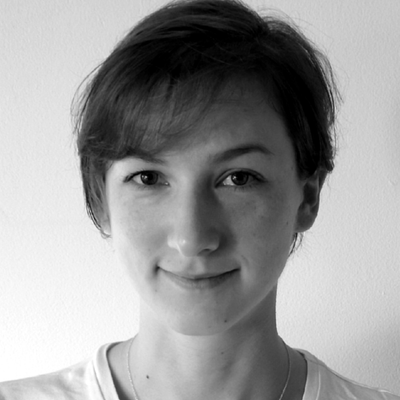ABOVE: © KAILEY WHITMAN
A number of optical illusions used in cognition research rely on the perception, or misperception, of differences in size between identical shapes. Researchers use two main types of behavioral experiments to assess dogs’ susceptibility to these sorts of illusions. One way is to train the animals to interact with the illusions on a computer screen, using treats to motivate dogs to pick whichever stimulus they perceive to be larger, for example. The other is to use food—which dogs tend to express interest in without any training—to recreate the optical illusions for a spontaneous (untrained) choice experiment.

Sarah Byosiere and colleagues at La Trobe University in Australia reported an experiment using the above setup in 2016. They found that dogs trained to pick whichever black circle they perceived to be the larger of the two consistently selected the one surrounded by larger blue circles—the opposite effect from that seen in humans—suggesting that dogs’ and humans’ visual perception may differ for some aspects of this illusion.

Christian Agrillo and colleagues at the University of Padua in Italy carried out an experiment using this setup a few years ago, and assumed that dogs would choose the portion of food they perceived as larger. They found that dogs didn’t appear to perceive a difference in the portion sizes, even though humans would tend to perceive the food on the smaller plate to be more plentiful—a finding that could suggest that canine perception isn’t susceptible to this kind of illusion.
Read the full story.






